News Articles
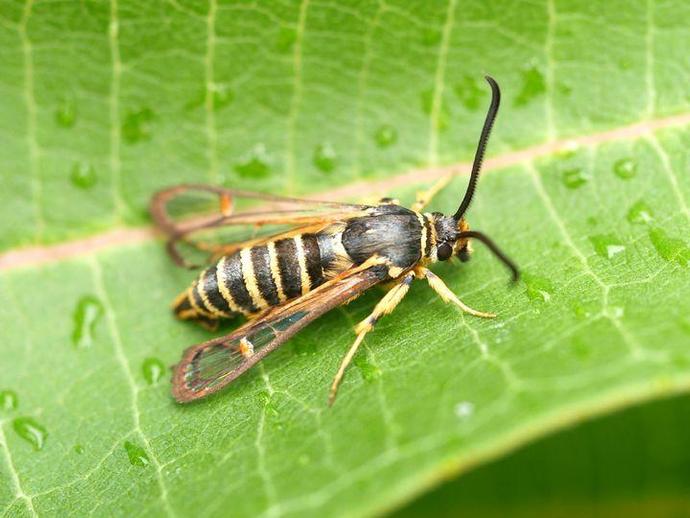
We're reaching into the archives for today's #BenInNature update presented by our friends at ...
October 31, 2021
We're reaching into the archives for today's #BenInNature update presented by our friends at Carter Bank & Trust! The following post was originally published on August 21, 2020. "Ah," you are perhaps thinking to yourself, "it appears we're looking at another wasp today. I was hoping for something more exciting to close out my week." Well buckle your seat belt, my friend, because this is a MOTH! Meet Pennisetia marginata, also known as the raspberry crown borer or blackberry clearwing borer. These moths belong to the family Sesiidae, the clearwing moth family. Clearwing moths are a prime example of what's known as "Batesian mimicry," which is when a harmless species evolves to imitate the warning signs of a harmful ...
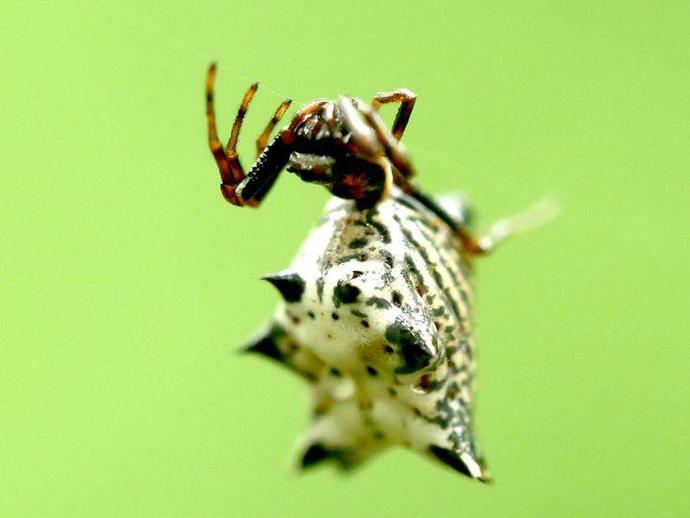
We're reaching into the archives for today's #BenInNature update presented by our friends at ...
October 30, 2021
We're reaching into the archives for today's #BenInNature update presented by our friends at Carter Bank & Trust! The following post was originally published on August 20, 2020. Behold the spined micrathena (Micrathena gracilis), a spider that looks like it's perpetually dressed up to go see Iron Maiden! The spined micrathena belongs to the orb weaver family Araneidae, which are the spiders that build the iconic wheel-shaped webs (the web didn't show up in this picture; don't worry, the spider isn't actually hovering in mid-air). This spined micrathena is a female. The males are much smaller and lack all but one or two of the characteristic spines on the abdomen. The females, while larger, are still pretty tiny; they top ...
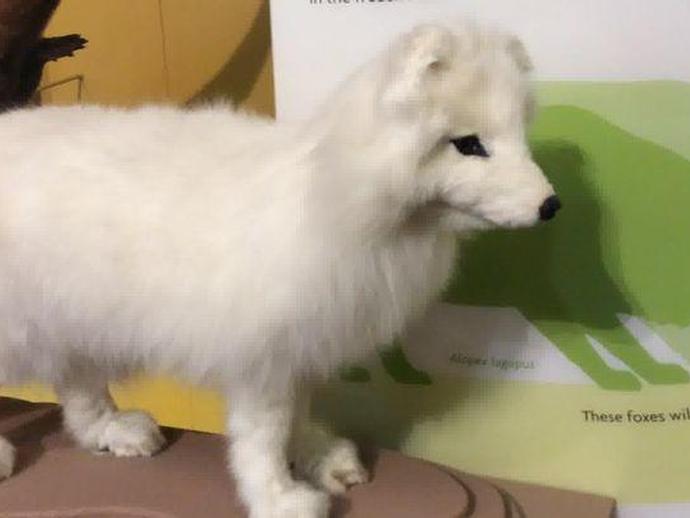
VMNH Educator Terri Robertson is inside the Lee and George W
October 29, 2021
VMNH Educator Terri Robertson is inside the Lee and George W. Lester, II How Nature Works gallery this week to highlight the arctic fox display in this week's episode of "Museum Minute"! ABOUT MUSEUM MINUTE The Virginia Museum of Natural History has a spectacular assortment of displays within its exhibit galleries! Some displays are unforgettable, while others don't always get the attention they deserve. Through the original series "Museum Minute", museum educators highlight various displays throughout the exhibit galleries, while providing intriguing facts you may not have known. "Museum Minute" is made possible thanks to VMNH Corporate Partners Carter Bank & Trust (www.cbtcares.com) and Boxley Materials Company (www. ...
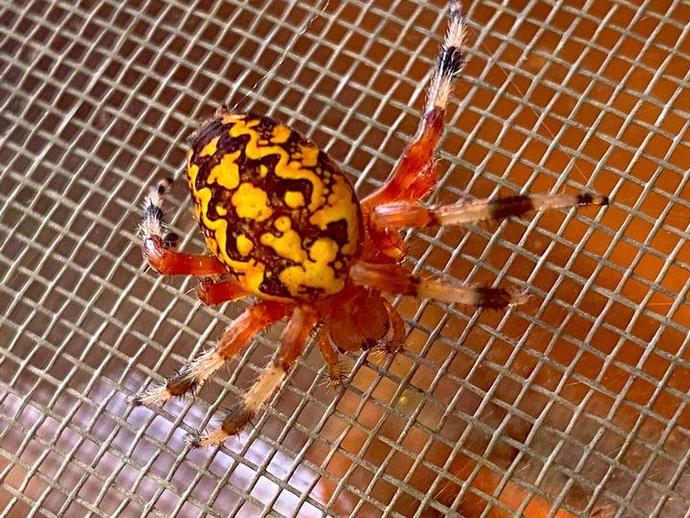
Ben here with the Friday edition of #BenInNature presented by our friends at Carter Bank & Trust!
October 29, 2021
Ben here with the Friday edition of #BenInNature presented by our friends at Carter Bank & Trust! Halloween is nearly upon us, and I figured we needed to celebrate with a Halloween-y nature post! With that in mind, please enjoy this marbled orb weaver (Araneus marmoreus), also known as the pumpkin spider or Halloween spider! Marbled orb weavers like this one are fairly common, but they're not always easy to identify because the coloration of their abdomens can vary wildly. Their abdomens are most often orange, but they can also be yellow (like this one), pale orange, beige, white, red, or dark brown! Their patterns can also vary a great deal also, with one variety having a white abdomen with a large black splotch near ...
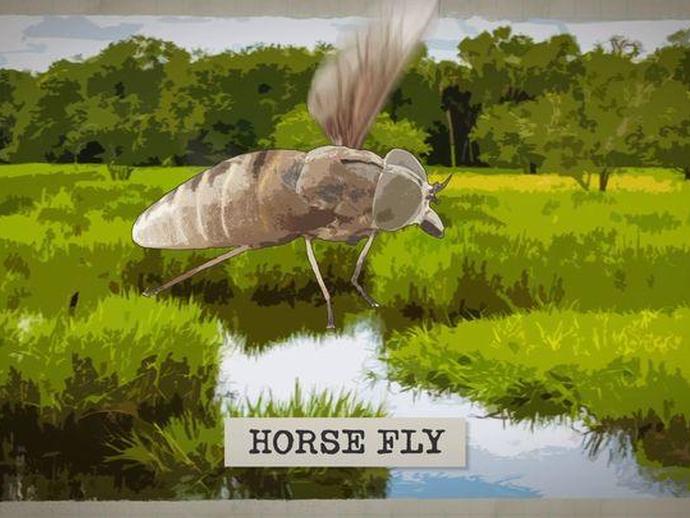
Have you ever endured the painful bite of a horse fly?
October 29, 2021
Have you ever endured the painful bite of a horse fly? Learn more about the fascinating world of these blood-suckers with entomologist Dr. Art Evans and VPM radio producer Steve Clark. About This Video This video is part of the "What's Bugging You?" animated series produced by VPM and Science Matters, a multi-media educational initiative of VPM. To learn more about the series, please visit https://vpm.org/whatsbuggingyou. About Dr. Art Evans Dr. Evans is both a VMNH Research Associate and a member of the Board of Trustees at the Virginia Museum of Natural History. An accomplished entomologist specializing in beetle taxonomy, his published works include "Beetles of Eastern North America," "An Inordinate Fondness for ...
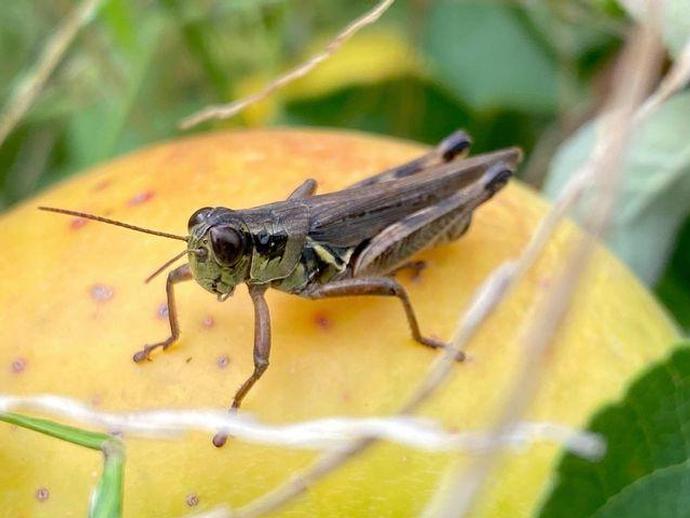
It's time for another edition of #BenInNature presented by our friends at Carter Bank & Trust!
October 28, 2021
It's time for another edition of #BenInNature presented by our friends at Carter Bank & Trust! The red-legged grasshopper (Melanoplus femurrubrum) is one of our most common grasshoppers, and it can be found not only in the U.S. but also in Mexico and Canada. It's so ubiquitous, in fact, that it's frequently used as a model organism in scientific studies! One of the reasons this grasshopper is often studied by scientists is that its behavior changes depending on the climate. The farther north you travel, the smaller the red-legged grasshoppers; this is because in northern regions, the agricultural growing season is shorter, meaning that these grasshoppers need to reach maturity much faster than their southern brethren. In ...
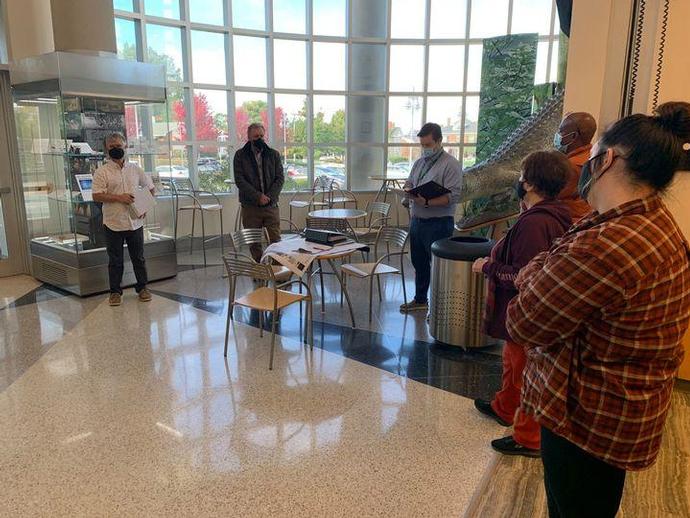
Museum CFO Jonathan Martin is leading a pre-bid conference today at the museum with contractors ...
October 28, 2021
Museum CFO Jonathan Martin is leading a pre-bid conference today at the museum with contractors for the upcoming Jean S. Adams Education Pavilion, which the museum strives to have installed by Summer 2022! The pavilion, which will be located adjacent to the Harvest Foundation Hall of Ancient life, will provide a visual connection to neighboring J. Frank Wilson Park and feature lessons in forest ecology. The pavilion will provide another visual highlight - a life-size model of Pelagornis sandersi - an extinct species of flying bird with the largest wingspan of any flying bird yet discovered (over 20 feet in length)!
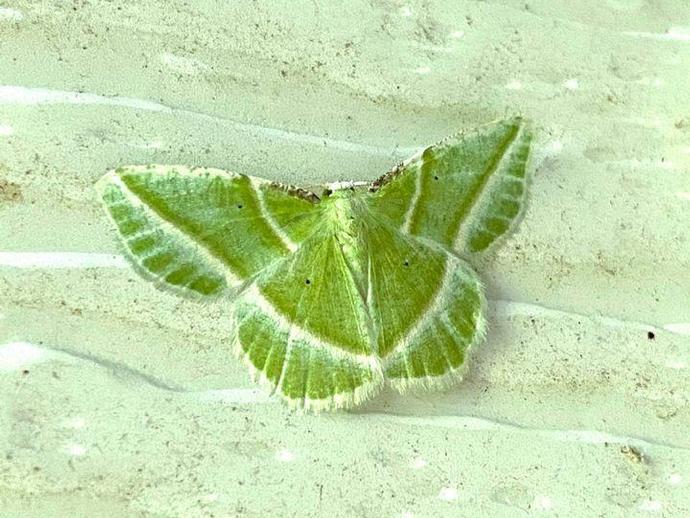
It's time for today's edition of #BenInNature presented by our friends at Carter Bank & Trust!
October 27, 2021
It's time for today's edition of #BenInNature presented by our friends at Carter Bank & Trust! I love cool-looking moths, and sadly, the peak time for spotting moths is now firmly in our rearview window. However, there are still a few moths fluttering about in southwest Virginia, like this showy emerald moth (Dichorda iridaria)! This is one of the geometer moths belonging to the family Geometridae. The larval forms of the moths in this family are commonly called "inchworms" for the looping way they move, almost as though they're taking measurements. This behavior is reflected in the scientific name; "geometer" roughly translates to "to measure the Earth." The showy emerald is a small but very attractive moth that can ...
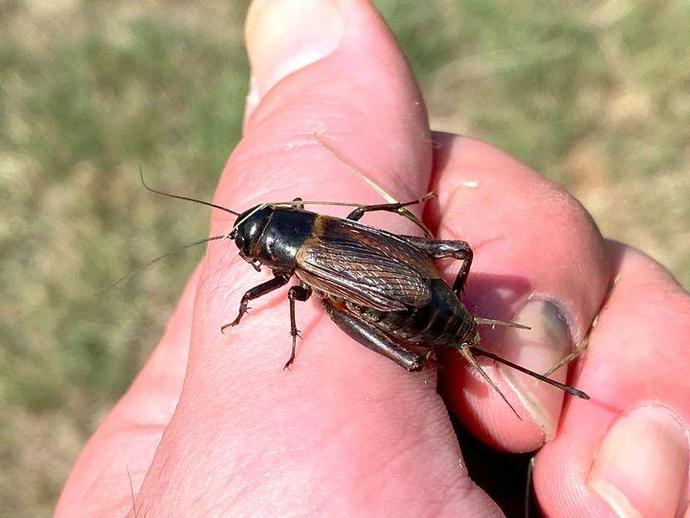
Ben here with today's edition of #BenInNature presented by our friends at Carter Bank & Trust!
October 26, 2021
Ben here with today's edition of #BenInNature presented by our friends at Carter Bank & Trust! Field crickets like this little lady belong to the subfamily Gryllinae. Here in Virginia, we often associate field crickets with the late summer and early fall; however, they're actually around most of the year! The eggs hatch in the spring and the juvenile or "nymph" crickets grow rapidly, but they're most visible later in the season when they've molted multiple times and reached their full size. Field crickets will eat just about anything, from plants to other insects (whether dead or alive). They can often be found feeding on grasshopper eggs or the pupae of butterflies, moths, and flies. One of my favorite facts about ...
Your generous support matters!
October 25, 2021
Your generous support matters! From providing education scholarships to making possible the next great scientific discoveries to helping create curiosity-inspiring exhibits, your VMNH Discovery Fund contribution will help expand science education, research and exhibits throughout the Commonwealth and beyond during the coming year. Please consider donating to the VMNH Discovery Fund online today!
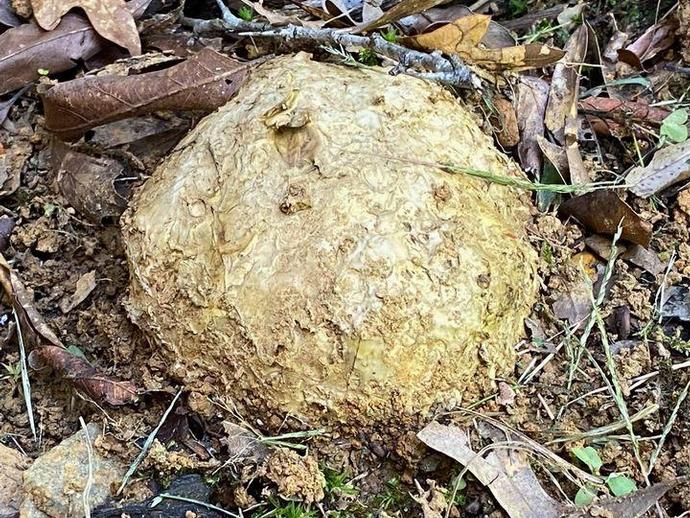
Ben here with the Monday edition of #BenInNature presented by our friends at Carter Bank & Trust!
October 25, 2021
Ben here with the Monday edition of #BenInNature presented by our friends at Carter Bank & Trust! This may look like an elderly baseball that had a traumatic experience, but it's actually a puffball mushroom! Puffballs belong to several different genera of mushrooms, including Calvatia, Calbovista, and Lycoperdon. Given that this one was on its last legs when I found it, I'm hesitant to even hazard a guess at the species, but most puffballs are pretty similar in behavior. What makes puffballs unique is the way they spread their spores (basically mushroom "seeds"). Most mushrooms have a cap with little gills underneath it that release the spores. In the case of puffballs, the spores are produced internally inside a ...
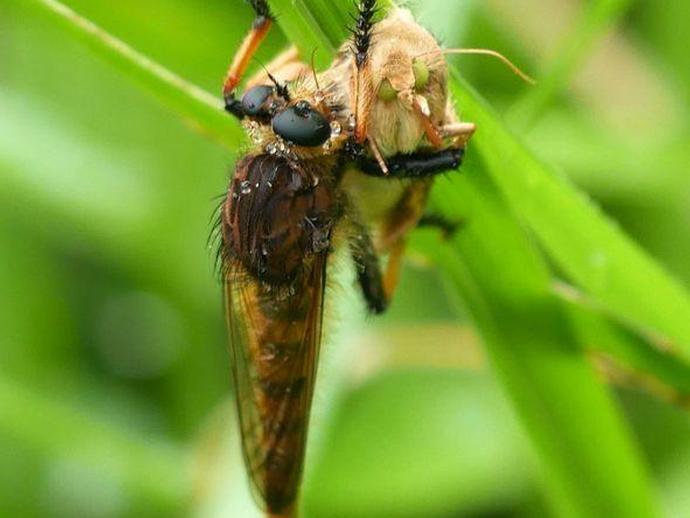
We're reaching into the archives for this Sunday's #BenInNature update presented by our friends ...
October 24, 2021
We're reaching into the archives for this Sunday's #BenInNature update presented by our friends at Carter Bank & Trust! The following post was originally published on August 19, 2020. Promachus rufipes, also known as the red-footed cannibalfly or bee panther, is one fierce little predator. If you don't believe me, just ask the unfortunate moth that this one captured! The red-footed cannibalfly belongs to the family Asilidae, members of which are commonly called "robber flies." Robber flies are voracious ambush predators; during the warmest hours of the day, they take a strategic position in an open sunny area where they watch and wait. Once they see an enticing-looking insect fly by, they take off and catch it in mid-air! ...
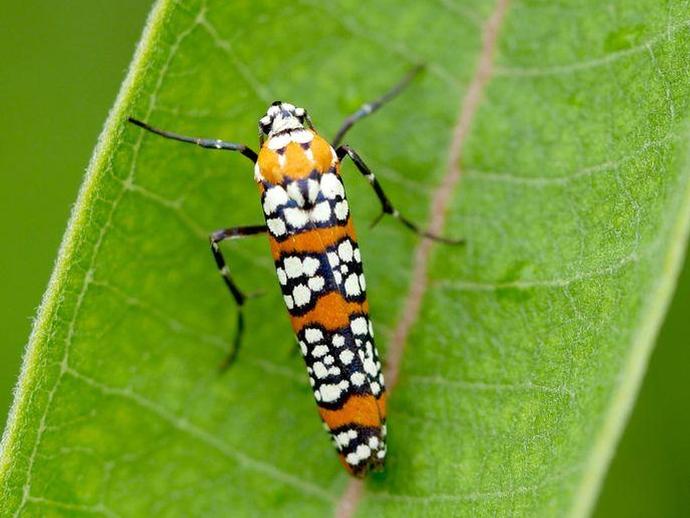
We're reaching into the archives for today's #BenInNature update presented by our friends at ...
October 23, 2021
We're reaching into the archives for today's #BenInNature update presented by our friends at Carter Bank & Trust! The following post was originally published on August 18, 2020. If you've ever wanted to see a moth that looks like it borrowed a pattern from the couch your great-aunt bought in 1977, then look no further than the ailanthus webworm moth (Atteva aurea)! These small moths are pretty common in southwest Virginia, although that wasn't always the case! It's believed that they are originally native to south Florida and Central America, which is the home of their original larval host plant: Simarouba glauca, the paradise tree. However, around the middle of the 19th century, they began gradually spreading north. Why ...
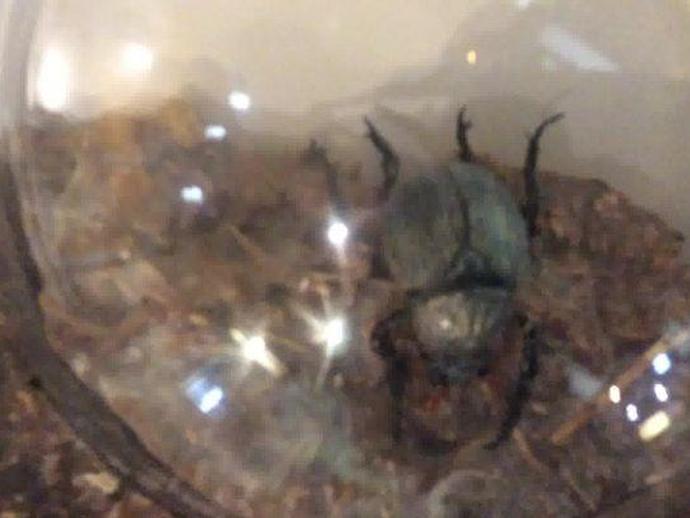
Save room for dessert! VMNH Education Manager Christy Deatherage is inside the Lee and George W
October 22, 2021
Save room for dessert! VMNH Education Manager Christy Deatherage is inside the Lee and George W. Lester, II How Nature Works gallery this week to highlight the dung beetle display in this week's episode of "Museum Minute"! ABOUT MUSEUM MINUTE The Virginia Museum of Natural History has a spectacular assortment of displays within its exhibit galleries! Some displays are unforgettable, while others don't always get the attention they deserve. Through the original series "Museum Minute", museum educators highlight various displays throughout the exhibit galleries, while providing intriguing facts you may not have known. "Museum Minute" is made possible thanks to VMNH Corporate Partners Carter Bank & Trust (www.cbtcares. ...
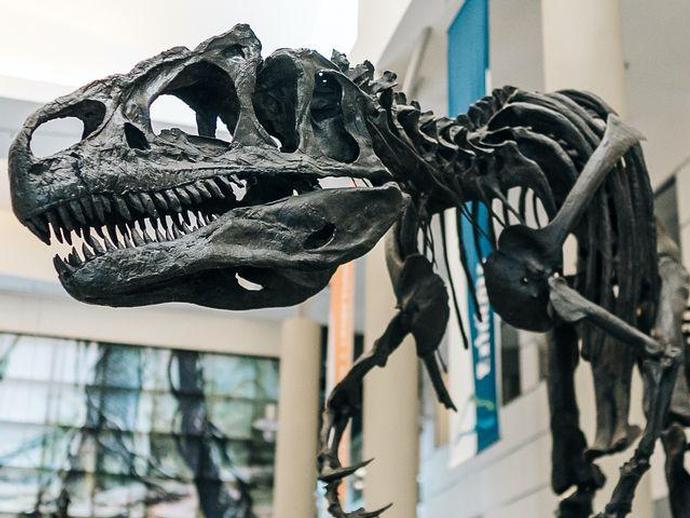
Allosaurus inside the Harvest Foundation Hall of Ancient Life
October 22, 2021
Allosaurus inside the Harvest Foundation Hall of Ancient Life
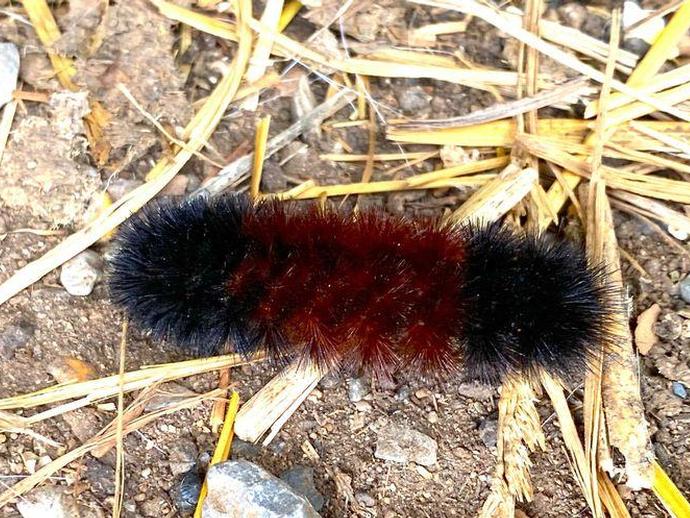
Ben here with the Friday edition of #BenInNature presented by our friends at Carter Bank & Trust!
October 22, 2021
Ben here with the Friday edition of #BenInNature presented by our friends at Carter Bank & Trust! Let's close out the week by looking at everyone's favorite invertebrate meteorologist, the woolly bear caterpillar (Pyrrharctia isabella)! Also known as the "woolly worm," folklore holds that you can predict the severity of the coming winter based on the brown band on a woolly bear caterpillar. A wide brown band means that the winter will be mild, while a narrow (or nonexistent) brown band means a harsh winter is coming. It's also said that if you see a woolly bear crawling southward, it means that it's trying to escape the coming hard winter. Alas, while these legends are a lot of fun, I have to be the killjoy and ...
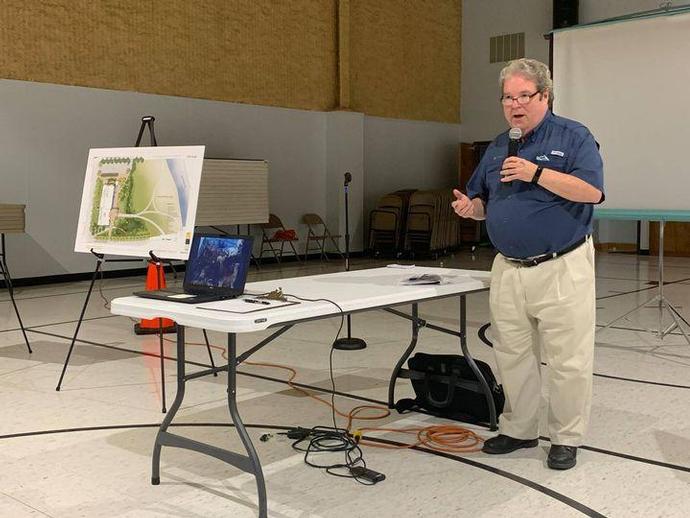
As momentum continues to grow for the future Waynesboro branch campus of the Virginia Museum of ...
October 21, 2021
As momentum continues to grow for the future Waynesboro branch campus of the Virginia Museum of Natural History, VMNH Foundation board member Len Poulin addressed the Waynesboro Fish and Game Protective Association this evening regarding the upcoming branch campus. To be located at the corner of W. Main and Arch Streets in Downtown Waynesboro, VMNH-Waynesboro will contain approximately 20,000 square feet of exhibits, classrooms, and visible laboratories, as well as a planned green roof overlooking South River and the Blue Ridge Mountains.
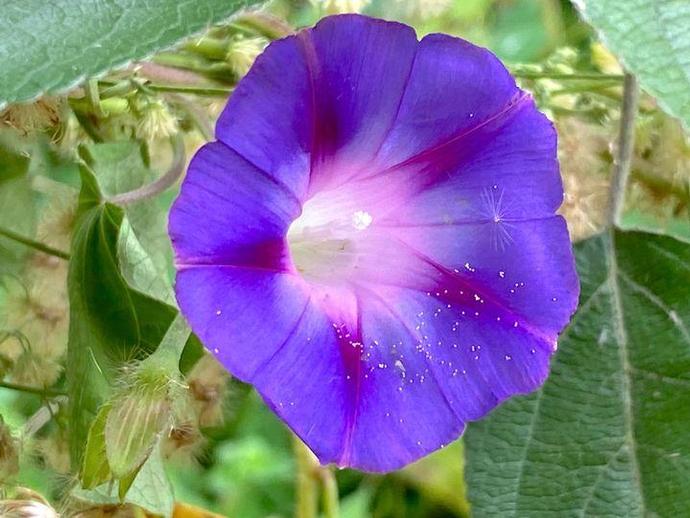
It's time for today's edition of #BenInNature presented by our friends at Carter Bank & Trust!
October 21, 2021
It's time for today's edition of #BenInNature presented by our friends at Carter Bank & Trust! This is a morning glory (family Convolvulaceae), and it's probably the common morning glory Ipomoea purpurea. However, I hesitate to say that definitively because there are more than 1,000 species of morning glory belonging to more than ten different genera! Morning glories get their name from the fact that the flowers of most species unfurl into full bloom early in the morning. The flowers only last a day, but most morning glory vines produce many, many blooms. Despite the common name, there are actually a few species of morning glory that bloom at night! One of the most unusual features of the morning glory involves its ...

Spaces remain available for the November 10 edition of "Doodle Bugs!
October 21, 2021
Spaces remain available for the November 10 edition of "Doodle Bugs!" at the Virginia Museum of Natural History! "Doodle Bugs!" offers children ages 3-5 the opportunity to experience science first-hand through hour-long programs that include imaginative stories, fun activities, games and crafts that spark creativity and curiosity. They are the perfect opportunity for adults and grandparents to learn and have fun with their children! Programs are held at 10 a.m. on the second Wednesday of the month from September through May. Children must be accompanied by an adult. Pre-registration is required one week prior to each program. Please note that masks are required during indoor activities. A minimal fee of $7 per child is ...
Did you know that armadillos, fishers, and porcupines are expanding their ranges into Virginia?
October 20, 2021
Did you know that armadillos, fishers, and porcupines are expanding their ranges into Virginia? VMNH Curator of Mammals Dr. Nancy Moncrief has worked with colleagues at Virginia's Department of Wildlife Resources to write research papers that document the recent movements of these animals into the Commonwealth. In the recently published article "Armadillos are moving into Southwest Virginia", Dwayne Yancey, editor of the Cardinal News, highlights Dr. Moncrief's research on all three of these lesser-known mammals in Virginia and explains where in the Commonwealth they are most likely to be found.
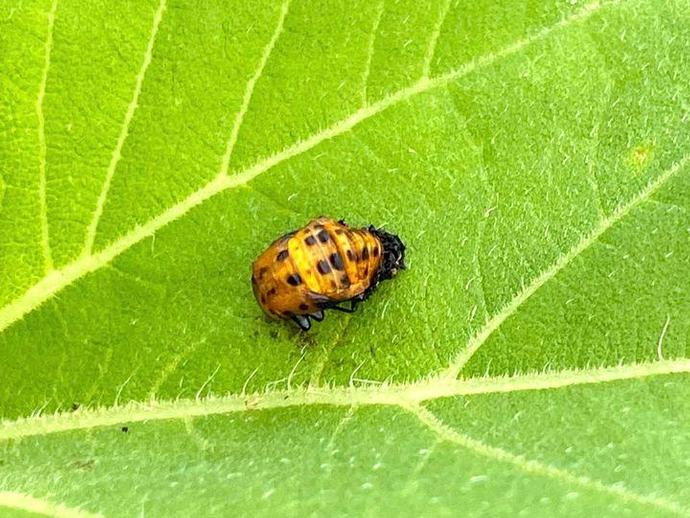
It's time for the Wednesday edition of #BenInNature presented by our friends at Carter Bank & ...
October 20, 2021
It's time for the Wednesday edition of #BenInNature presented by our friends at Carter Bank & Trust! It may not look like much, but this is actually one of our most beloved insects, just in a different stage of life. This is a ladybug pupa! Ladybugs (family Coccinellidae) go through four stages of life: eggs, larvae, pupae, and adults. The larvae and the adults prey on a variety of pest insects (including aphids), but in the stage between these two parts of their lives, ladybugs don't do much of anything. They cement themselves to a leaf and their body undergoes a radical change, transforming from a caterpillar-like larva into the adult form we know and love. It takes one to two weeks for this change to take place. It ...
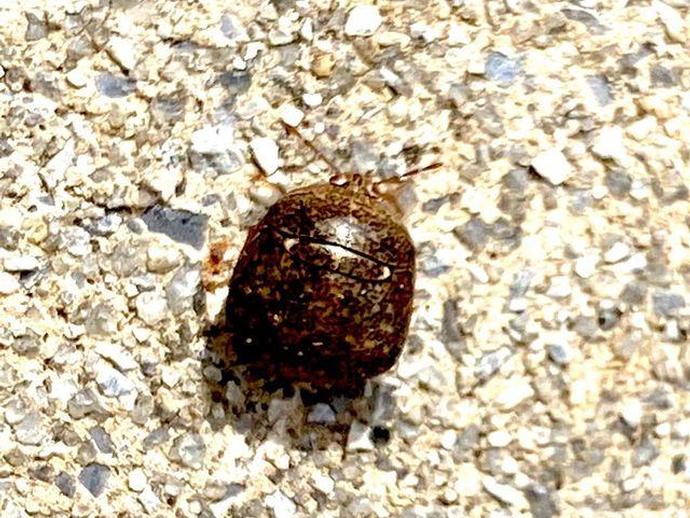
Ben here with Tuesday's edition of #BenInNature presented by our friends at Carter Bank & Trust!
October 19, 2021
Ben here with Tuesday's edition of #BenInNature presented by our friends at Carter Bank & Trust! This tiny little guy is Megacopta cribraria, better known as the kudzu bug! This species is, unfortunately, one of the newer invasive species to pop up in the United States, having spread aggressively across a large portion of the southeastern U.S. since first appearing in northern Georgia in 2009. The kudzu bug is native to India and China, and it's a shield bug (Pentatomoidea) in the same superfamily as stink bugs. Much like its brethren, it also releases a foul-smelling pheromone as a defense mechanism, and if you have sensitive skin, this liquid can even cause red welts to form if you touch it. The kudzu bug sucks ...
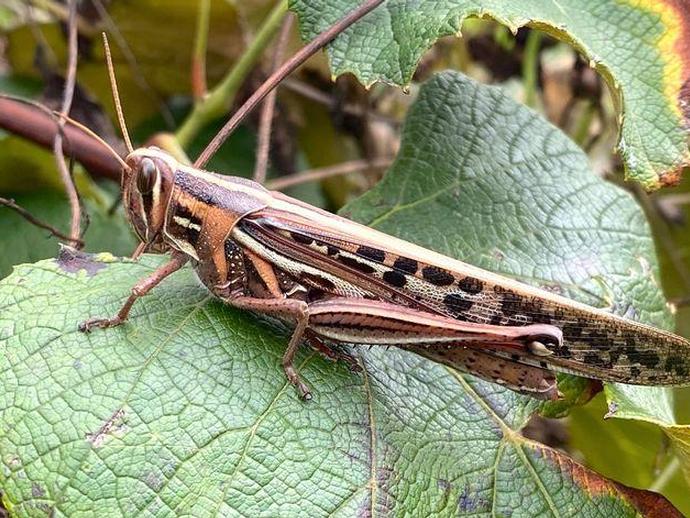
Ben here with the Monday edition of #BenInNature presented by our friends at Carter Bank & Trust!
October 18, 2021
Ben here with the Monday edition of #BenInNature presented by our friends at Carter Bank & Trust! While this isn't the first photo I've taken of an American bird grasshopper (Schistocerca america), it's definitely the best one. This is a bit of a difficult species to photograph; unlike most grasshoppers, their first instinct when startled is to fly up into a tree, so it's rare for me to be able to get this close to one! This particular grasshopper is a bit unusual compared to most other grasshoppers we have in Virginia. For one thing, it's the largest grasshopper we have in the state, and for another, it's both the first grasshopper you'll see in the spring and one of the last you'll see in the fall. The reason is that ...
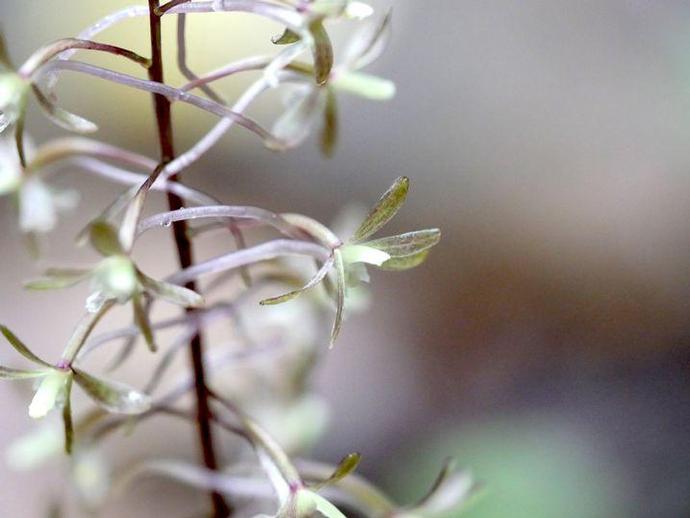
We're reaching into the archives for this Sunday's #BenInNature update presented by our friends ...
October 17, 2021
We're reaching into the archives for this Sunday's #BenInNature update presented by our friends at Carter Bank & Trust! The following post was originally published on August 17, 2020. While it may not be quite as striking as the pink lady's slipper orchid (Cypripedium acaule), the cranefly orchid (Tipularia discolor) is still a beautiful plant! This is the only orchid within the genus Tipularia that can be found in North America and it is mainly found in the southeast, although its range extends up into the Catskills. There are also a few isolated populations in the Great Lakes area. Like many orchids, this one has an interesting method of pollination. The flowers are mainly pollinated by owlet moths, which visit the ...
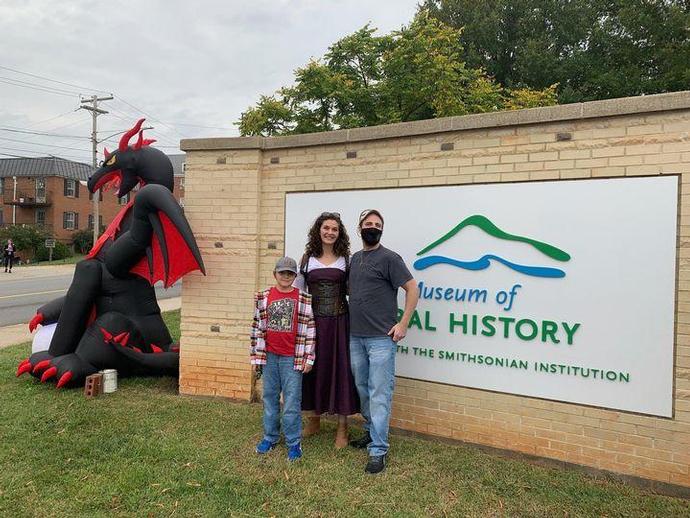
Our 500th customers for today's portion of Dragon Festival 2021!
October 16, 2021
Our 500th customers for today's portion of Dragon Festival 2021!

A scene from the morning fire performance during today's Dragon Festival 2021!
October 16, 2021
A scene from the morning fire performance during today's Dragon Festival 2021!
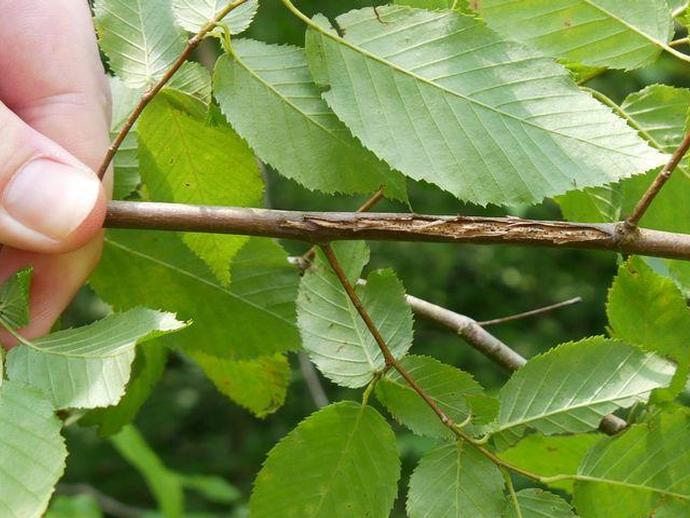
We're reaching into the archives for today's #BenInNature update presented by our friends at ...
October 16, 2021
We're reaching into the archives for today's #BenInNature update presented by our friends at Carter Bank & Trust! The following post was originally published on August 16, 2020. Here's something neat that I spotted a little after the periodical cicada emergence, but I forgot to post the picture until I stumbled across it today. Have you ever noticed a little stripped area on a small twig like the one seen here? You've just found some cicada eggs! Or at least a spot where some cicada eggs used to be! After mating, female cicadas land on small twigs and use their ovipositors (a tubular egg-laying organ) to cut small slits in the twig's surface and lay an egg in each slit. After the eggs hatch, the tiny cicada nymphs emerge ...
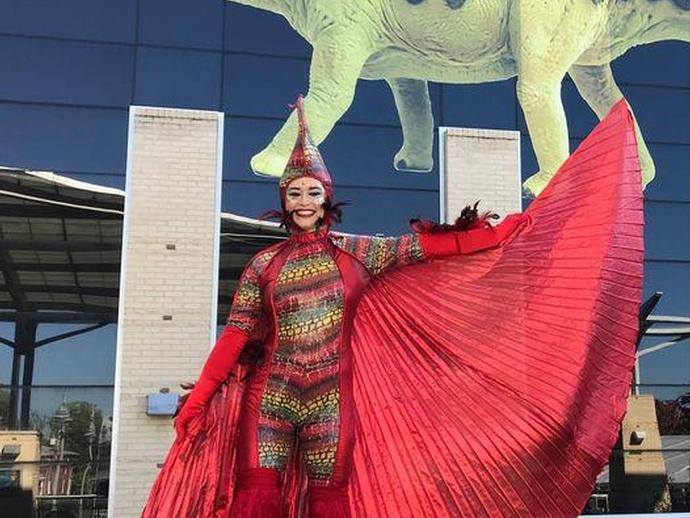
We had a blast hosting Dragon Festival 2021 today and we're looking forward to hosting it again ...
October 15, 2021
We had a blast hosting Dragon Festival 2021 today and we're looking forward to hosting it again tomorrow from 10am to 6pm! Be sure not to miss the fire performances at 11am, 2pm and 4pm, as well as the stilt walker performers from Noon to 1pm and 2-4pm! Check out the Dragon Festival 2021 event listing for more information about what to see and do, as well as very important information regarding vaccine and COVID-19 testing requirements!
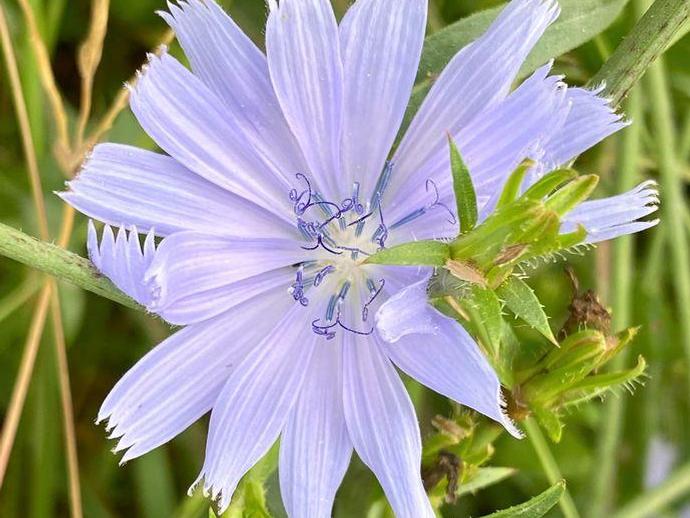
Ben here with the Friday edition of #BenInNature presented by our friends at Carter Bank & Trust!
October 15, 2021
Ben here with the Friday edition of #BenInNature presented by our friends at Carter Bank & Trust! When it comes to identifying stuff in nature on the fly, plants are definitely my weak spot (it probably isn't good to have an entire taxonomic kingdom for a weak spot, but that's beside the point). And so, when I saw this flower over the weekend, I snapped a picture because I thought it was pretty. Little did I know this flower belongs to a very versatile plant. This is Cichorium intybus, better known as common chicory! While chicory is native to Europe, it has long been naturalized in North America and is fairly common. You've probably heard the word "chicory" used to refer to a coffee substitute which is made from roasted ...

If you are attending Dragon Festival 2021 ...
October 15, 2021
If you are attending Dragon Festival 2021, be on the lookout for these parking signs to direct you to available parking spots! Due to the museum's main parking lot being occupied with activities, parking for the event is located in nearby parking lots. Parking is free! Be sure to check out the Dragon Festival 2021 event listing for more information about what to see and do, as well as very important information regarding vaccine and COVID-19 testing requirements before visiting!
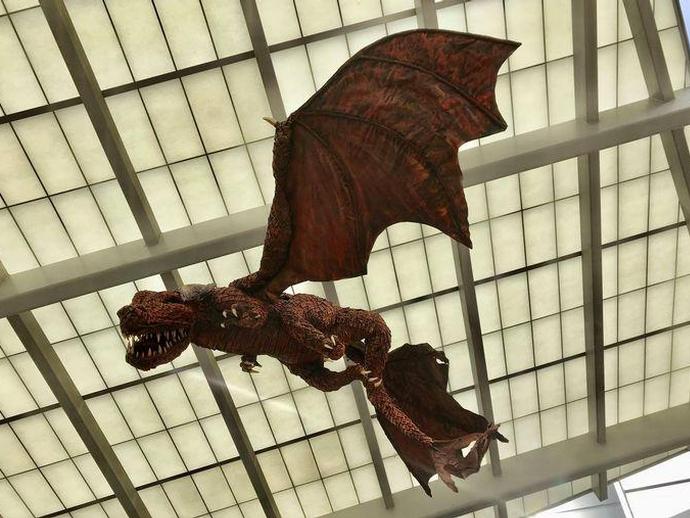
Watch out above as you enter the museum during Dragon Festival 2021 this Friday and Saturday ...
October 14, 2021
Watch out above as you enter the museum during Dragon Festival 2021 this Friday and Saturday from 10am to 6pm! Be sure to check out the Dragon Festival 2021 event listing for more information about what to see and do, as well as very important information regarding vaccine and COVID-19 testing requirements before visiting! This dragon was designed and created by J. Leigh and The Color of Mud!
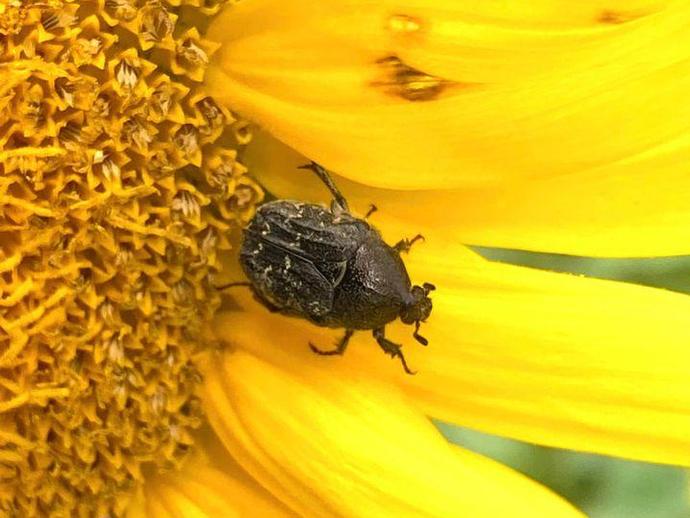
Ben here with today's edition of #BenInNature presented by our friends at Carter Bank & Trust!
October 14, 2021
Ben here with today's edition of #BenInNature presented by our friends at Carter Bank & Trust! When we think of pollinators, we usually think of bees. Beetles, however, are some of our most important pollinators; it's estimated that nearly 90 percent of the world's flowering plants are pollinated by beetles! In fact, it's believed that beetles were probably the first pollinating insects. Unlike bees, beetles are considered "dirty" or "mess and soil" pollinators. While many species of beetles drink flower nectar, they might also nibble on a flower petal and defecate on the flower before moving on to the next one. Clearly, they ain't much for table manners. This particular beetle is Euphoria sepulcralis, also known as ...
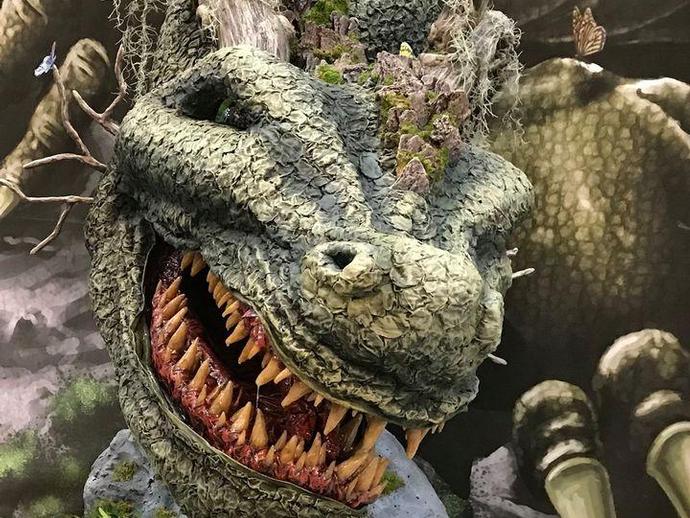
Dragon Festival 2021 takes place tomorrow and Saturday from 10am to 6pm!
October 14, 2021
Dragon Festival 2021 takes place tomorrow and Saturday from 10am to 6pm! Dragon displays and art, full-Size dragon sculpture, fire performances, blacksmith presentations, stilt walkers, and more await you! Food trucks and a beer/meade garden are also a part of the festivities! Please note that proof of a full course of COVID-19 vaccination or proof of a negative COVID-19 lab test (no at-home tests) taken within 72 hours of the event is required to attend this year's event for ages 12 and older. Be sure to visit the Dragon Festival 2021 event listing for important additional information regarding these requirements.
Since the Middle Ages ...
October 13, 2021
Since the Middle Ages, humans have mined a rich deposit of shale stretching across Europe for copper, zinc, silver — and fossils. In 1992, a fossil collector in eastern Germany pulled a strange skeleton out of this rocky layer. It had a pointy crown of horns, thin limbs and peculiar rods stretching out from its chest. "These are a really weird set of bones. They don't seem to exist in pretty much any other vertebrate animal," said Adam Pritchard, an assistant curator of paleontology at the Virginia Museum of Natural History and former Peter Buck postdoctoral fellow at the Smithsonian's National Museum of Natural History. The fossil, it turns out, is an ancient reptile named Weigeltisaurus jaekeli, a reptile that ...
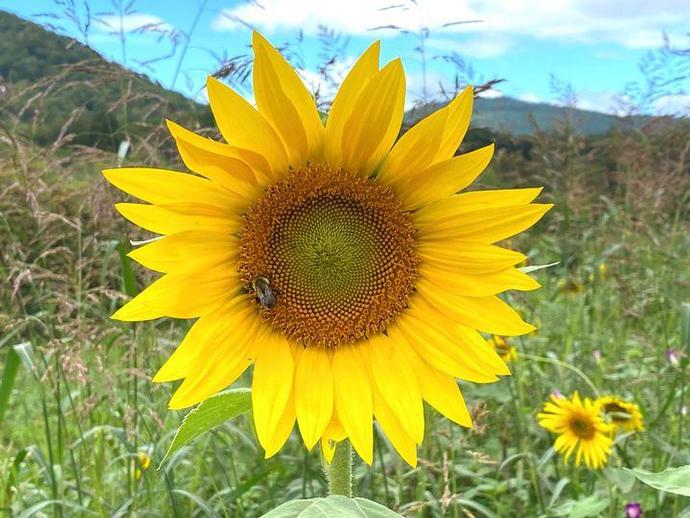
Ben here with the Wednesday edition of #BenInNature presented by our friends at Carter Bank & ...
October 13, 2021
Ben here with the Wednesday edition of #BenInNature presented by our friends at Carter Bank & Trust! Here's another photo from my weekend apple-picking excursion: Helianthus annuus, better known as the common sunflower! There's also a bonus bumblebee, but we'll get to that later. When we see a sunflower in bloom, we generally think of the head as one big flower. In fact, the head is what's known as a "pseudanthium," which is a plant structure that only resembles a flower. The actual flowers are the tiny, five-petaled florets in the center of the pseudanthium, also known as "disk flowers." These flowers mature into sunflower seeds. Sunflowers are grown both as ornamentals and also as an important agricultural crop. ...
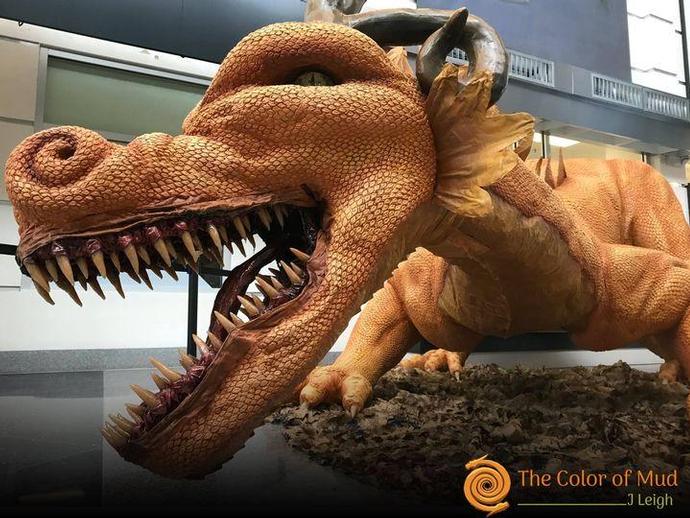
Tiamat, the incredible 37 foot-long dragon designed and created by J
October 13, 2021
Tiamat, the incredible 37 foot-long dragon designed and created by J. Leigh and The Color of Mud is ready to greet visitors at Dragon Festival 2021 this Friday and Saturday! Please note that proof of a full course of COVID-19 vaccination or proof of a negative COVID-19 lab test (no at-home tests) taken within 72 hours of the event is required to attend this year's event for ages 12 and older. Be sure to visit the Dragon Festival 2021 event listing for important additional information regarding these requirements.

"Crossroads: Archaeology, Natural History, and the South River Watershed" presented by Dr
October 12, 2021
"Crossroads: Archaeology, Natural History, and the South River Watershed" presented by Dr. Carole Nash Dr. Carole Nash, Ph.D., is Associate Professor in the School of Integrated Sciences at JMU, Research Associate with the Virginia Museum of Natural History, and Director of the Environmental Archaeology Lab at JMU. She is the founder of Mountain Valley Archaeology, a new non-profit devoted to citizen science and community work in cultural heritage. She has 40 years' experience in cultural resource management with the National Park Service, National Forest Service, Commonwealth of Virginia, and with various private firms.

Presenter: Dr
October 12, 2021
Presenter: Dr. Carole Nash, JMU Associate Professor of Integrated Science & Technology and Director of the Environmental Archaeology Laboratory Dr. Carole Nash, Ph.D., is Associate Professor in the School of Integrated Sciences at JMU, Research Associate with the Virginia Museum of Natural History, and Director of the Environmental Archaeology Lab at JMU. She is the founder of Mountain Valley Archaeology, a new non-profit devoted to citizen science and community work in cultural heritage. She has 40 years' experience in cultural resource management with the National Park Service, National Forest Service, Commonwealth of Virginia, and with various private firms.

Here it is!
October 12, 2021
Here it is!! The Dragon Festival 2021 Visitor's Guide is now available! Dragon Festival takes place this Friday and Saturday from 10 a.m. to 6 p.m. at the museum. Please note that proof of a full course of COVID-19 vaccination or proof of a negative COVID-19 lab test (no at-home tests) taken within 72 hours of the event is required to attend this year's event for ages 12 and older. Be sure to visit the Dragon Festival 2021 event listing for important additional information regarding these requirements.
Be sure not to miss this evening's Science Talk featuring Dr
October 12, 2021
Be sure not to miss this evening's Science Talk featuring Dr. Carole Nash - JMU professor, VMNH research associate, and VMNH board trustee - as she presents "Crossroads: Archaeology, Natural History, and the South River Watershed"! The presentation will be streamed live on the museum's Facebook page at 7 p.m. for anyone unable to attend the presentation at the Wayne Theatre!
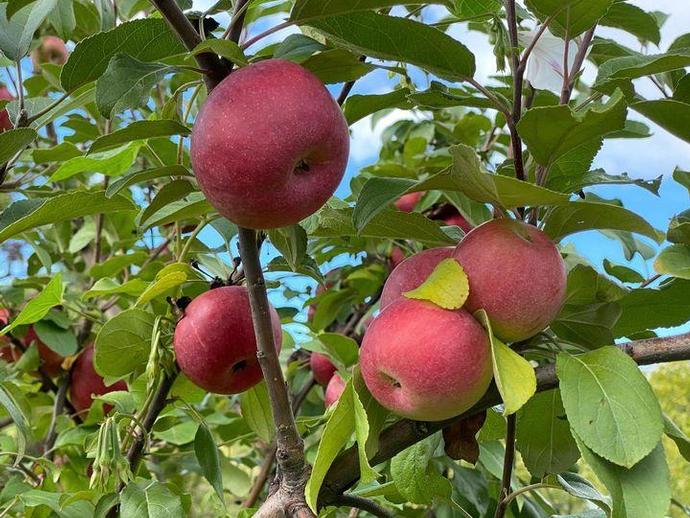
Ben here with the Tuesday edition of #BenInNature presented by our friends at Carter Bank & Trust!
October 12, 2021
Ben here with the Tuesday edition of #BenInNature presented by our friends at Carter Bank & Trust! I went apple-picking off the Blue Ridge Parkway over the weekend and spotted all kinds of cool nature, so over the next week or so I'll be highlighting some of my favorite finds. We'll start, logically enough, with apples! All of the varieties of apples that we eat are produced by the same species of tree: Malus domestica. This species is originally derived from the wild apple tree (Malus sieversii) of central Asia, mixed over the years with the crabapple tree (Malus sylvestris), which is native to Europe. You could write a whole book just about apples (and many people have), but I'll focus on what I think is the most ...
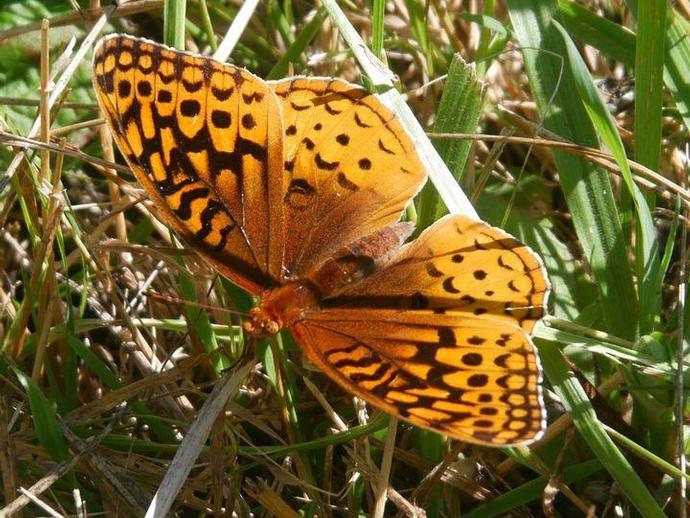
We're reaching into the archives for this Monday's #BenInNature update presented by our friends ...
October 11, 2021
We're reaching into the archives for this Monday's #BenInNature update presented by our friends at Carter Bank & Trust! The following post was originally published on August 15, 2020. Speyeria cybele, commonly known as the great spangled fritillary, is a fairly common North American butterfly that can be found just about everywhere in the contiguous U.S. except for the southwest. They can be found in fields, valleys, pastures, and open woodland, but they're most common in habitats with plenty of moisture. The adults feed on the nectar from a variety of flowers, including milkweeds, thistles, mountain laurel, and others. Interestingly, their life cycle is quite similar to the related and much rarer Diana fritillary ...
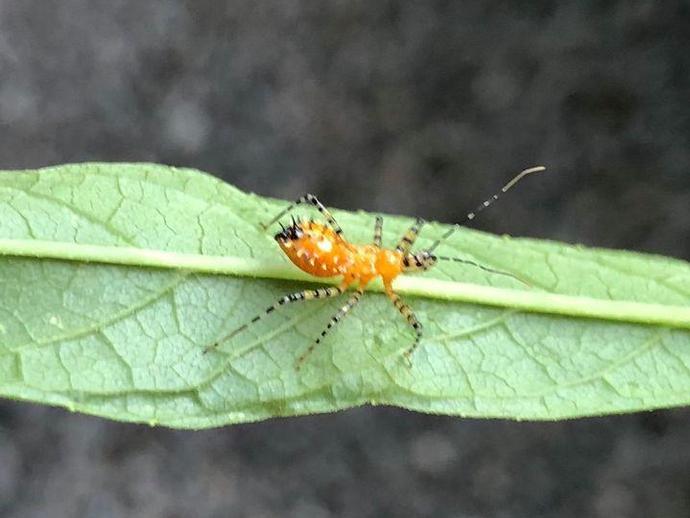
We're reaching into the archives for today's #BenInNature update presented by our friends at ...
October 10, 2021
We're reaching into the archives for today's #BenInNature update presented by our friends at Carter Bank & Trust! The following post was originally published on August 14, 2020. Over the last few months, I've helped to identify a whole lot of cool insects sent in by some of the wonderful folks who follow our VMNH Facebook page. During that time, many folks have sent in pictures of assassin bug nymphs, and I can certainly see why; they're unusual-looking little critters! Assassin bugs belong to the family Reduviidae, a large family of true bugs that can be found throughout the world. Almost all assassin bugs are ambush predators, and they attack their prey by stabbing it with their sharp proboscis and injecting it with ...
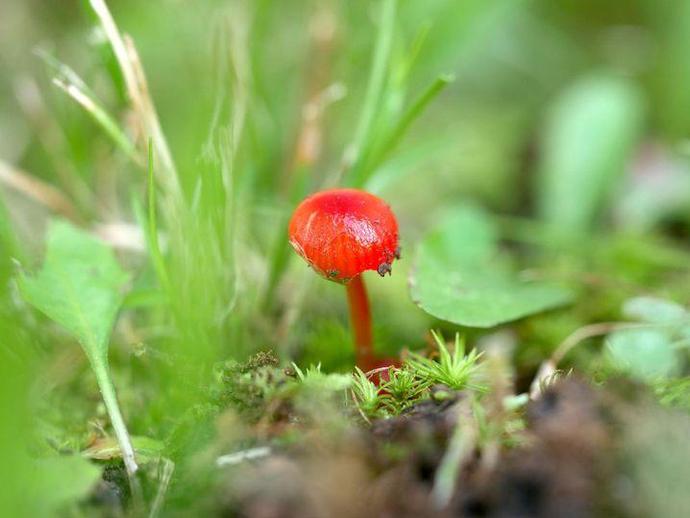
We're reaching into the archives for today's #BenInNature update presented by our friends at ...
October 9, 2021
We're reaching into the archives for today's #BenInNature update presented by our friends at Carter Bank & Trust! The following post was originally published on August 13, 2020. I haven't posted too many mushrooms for the same reason I don't eat wild mushrooms: I'm not very good at identifying them. However, I'm reasonably certain that this little guy is Hygrocybe miniata, also known as the vermilion waxcap. These little mushrooms can be found worldwide, from the fields and heaths of Europe all the way to the rainforests. The emphasis is definitely on the word "little." The caps of these mushrooms rarely grow larger than a couple centimeters in diameter. This particular mushroom was so small that I thought it was a holly ...
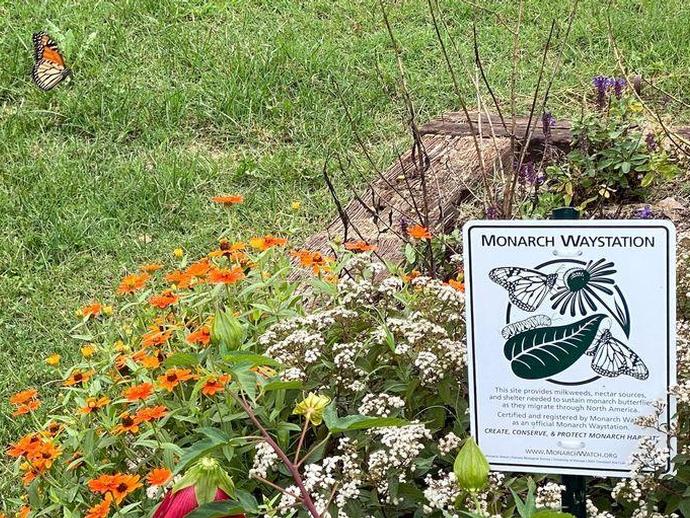
Ben here with the Friday edition of #BenInNature presented by our friends at Carter Bank & Trust!
October 8, 2021
Ben here with the Friday edition of #BenInNature presented by our friends at Carter Bank & Trust! Things are buzzing at the VMNH Jim Tobin Monarch Waystation! There are a ton of pollinators visiting the garden, along with plenty of monarch butterflies (Danaus plexippus) like the one seen in the upper left corner of this photo! The waystation provides an excellent resource for monarch butterflies migrating south for the winter. The monarchs that occur east of the Rocky Mountains have quite a journey ahead of them; they must migrate south to the sanctuaries found at the Mariposa Monarca Biosphere Reserve in the Mexican state of Michoacán (they also overwinter in certain parts of Florida and Cuba). This migration ...
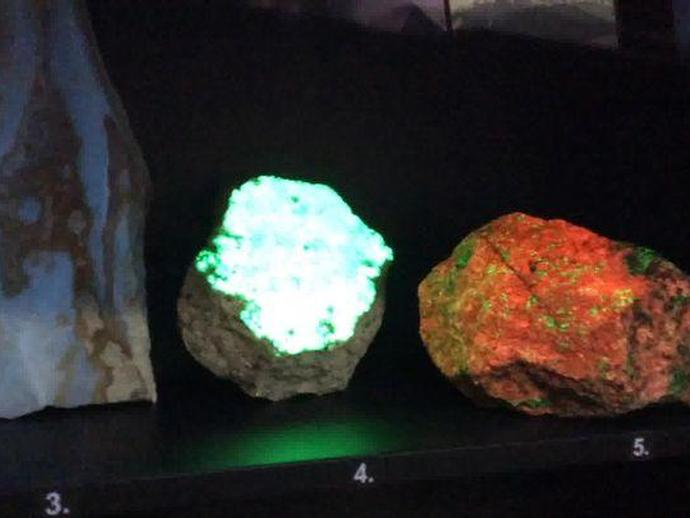
VMNH Educator Terri Robertson is inside the Lee and George W
October 8, 2021
VMNH Educator Terri Robertson is inside the Lee and George W. Lester, II How Nature Works gallery this week to highlight the fluorescent mineral display in this week's episode of "Museum Minute"! ABOUT MUSEUM MINUTE The Virginia Museum of Natural History has a spectacular assortment of displays within its exhibit galleries! Some displays are unforgettable, while others don't always get the attention they deserve. Through the original series "Museum Minute", museum educators highlight various displays throughout the exhibit galleries, while providing intriguing facts you may not have known. "Museum Minute" is made possible thanks to VMNH Corporate Partners Carter Bank & Trust (www.cbtcares.com) and Boxley Materials ...
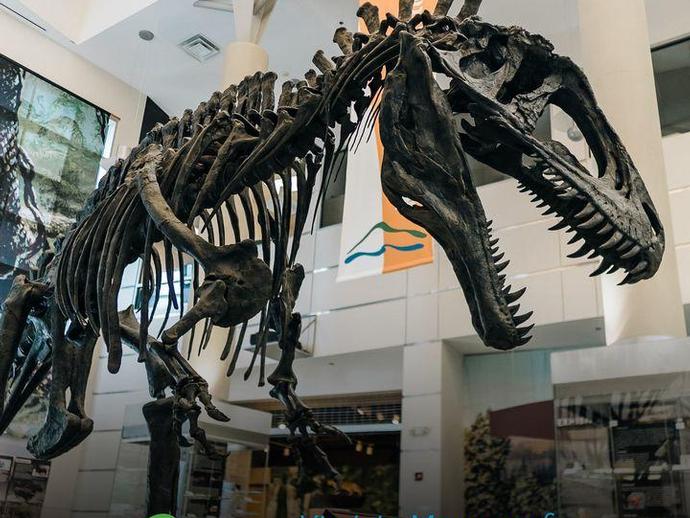
JOB OPPORTUNITY AT VMNH!
October 7, 2021
JOB OPPORTUNITY AT VMNH! The Virginia Museum of Natural History is seeking a Museum Technician to join our Buildings & Grounds team. This is a full-time position with state benefits. Job duties include... *Perform building maintenance, custodial, and grounds care. *Perform maintenance in trades areas, including carpentry, drywall repair, electrical, plumbing, janitorial, cleaning and sanitation. *Must have some demonstrated knowledge of HVAC systems. *Perform basic vehicle upkeep and maintenance. *Must be able to lift up to 50 pounds. *Must be able to work some museum events, which may include evening, weekend, and holiday hours. *Other duties as assigned. To learn more about this job opportunity and apply, ...
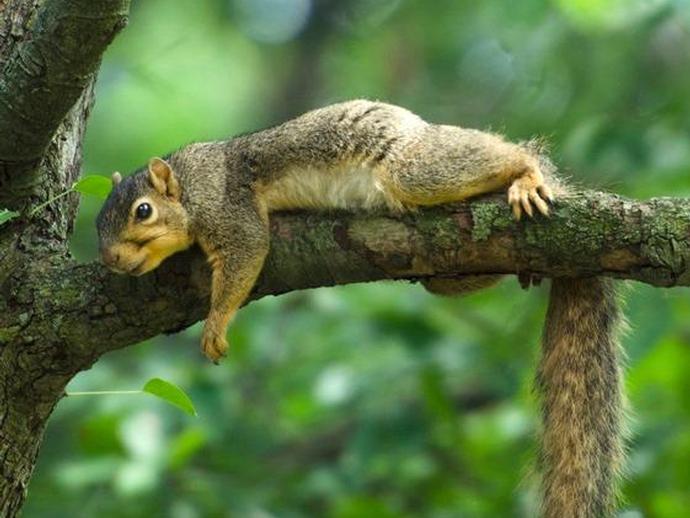
What secrets does the eastern fox squirrel hold? Dr
October 7, 2021
What secrets does the eastern fox squirrel hold? Dr. Nancy Moncrief, VMNH Curator of Mammalogy, plans to use a new tool to unlock the genetic mysteries of this fascinating species. Along with Drs. Lin Kang, Pawel Michalak, and Eric Hallerman, Dr. Moncrief recently co-authored the paper "A draft genome assembly for the eastern fox squirrel Sciurus niger," which was published in the journal "G3: Genes, Genomes, Genetics." Using funding provided by the VMNH Foundation, the team sequenced the entire genome of the fox squirrel, providing the first ever reference sequence for this species. The genome sequence is essentially a roadmap of the squirrel's genes, which will allow researchers the world over to gain a better ...
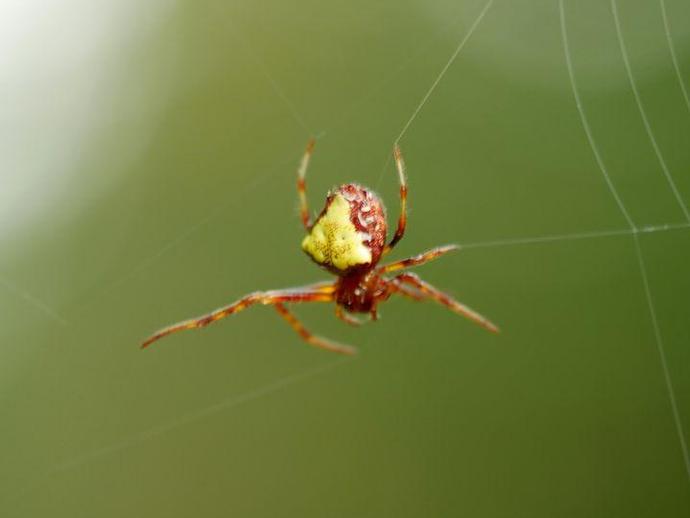
Ben here with today's edition of #BenInNature presented by our friends at Carter Bank & Trust!
October 7, 2021
Ben here with today's edition of #BenInNature presented by our friends at Carter Bank & Trust! Halloween is fast approaching, so what better time to look at a spooky spider? This is Verrucosa arenata, better known as the arrowhead orbweaver! This orbweaver is a bit unique as it's one of the very few large orbweavers that faces upwards in its web rather than facing down. Their webs are unique as well as they're made from tougher, stretchier silk than the webs of most other orbweavers. One of the benefits of these tough webs is that when a prey insect lands in the lower portion of the web, the spider can grab the silk strand the prey is stuck to and "reel it in," allowing the spider to catch its meal while expending very ...

We're just one week away from Dragon Festival 2021!
October 6, 2021
We're just one week away from Dragon Festival 2021!!! Dragon displays and art, fire performances, stilt walkers, food trucks and more await visitors on Friday, October 15 and Saturday, October 16 from 10 a.m. to 6 p.m.! Click to learn more, including important COVID-19 vaccine or negative lab test requirements for visitors!
Archives
2026
2025
2024
2023
2022
2021
2020
2019
2018
2017
2016
2015
2014
2013
2012
2011
2010
2009
2008

Please Visit Us Soon
Hours:
Tuesday - Saturday: 10am - 4pm
Sunday: Noon to 4pm (Memorial Day Weekend through Labor Day Weekend only)
Monday: Closed
Admission:
$12 for ages 18-59
$6 for ages 3-17, seniors 60+, and college students
FREE for children under 3, museum members, members of ASTC Passport participating institutions, and EBT cardholders
My 4 year old son loves going to the museum. The exhibits are educational, interactive and kid-friendly.
”

 Hours & Admissions
Hours & Admissions Directions
Directions